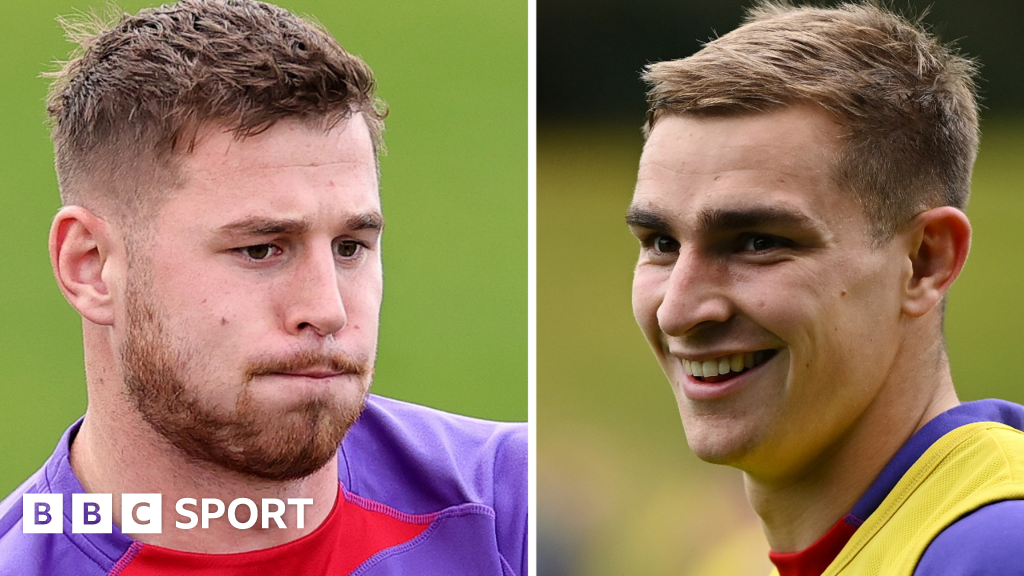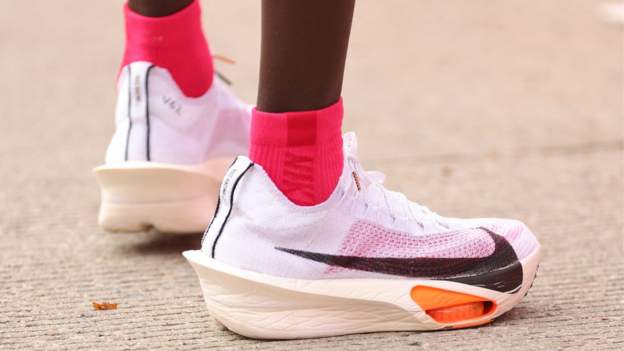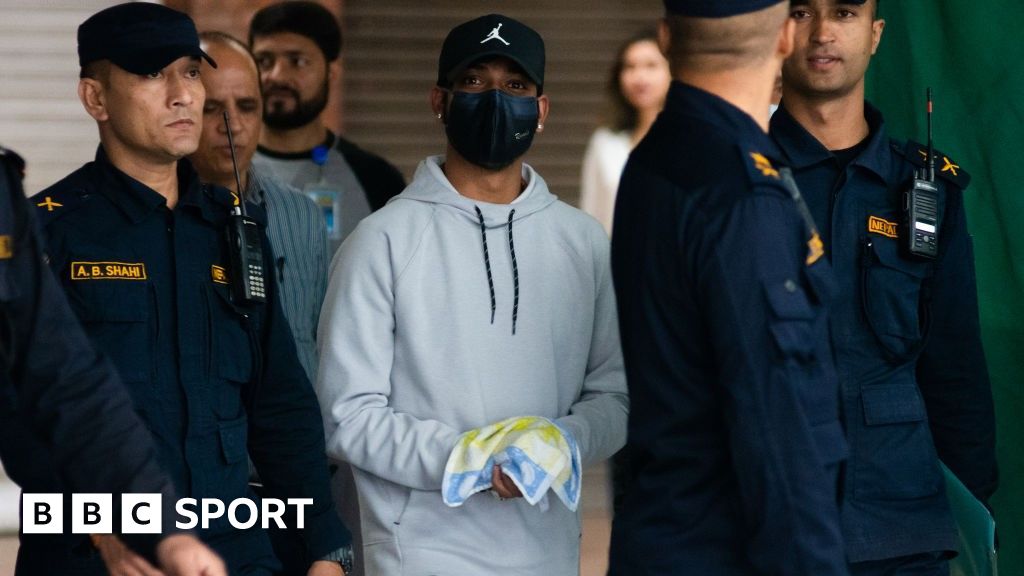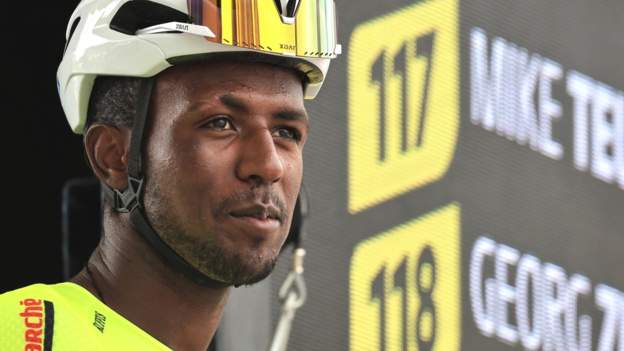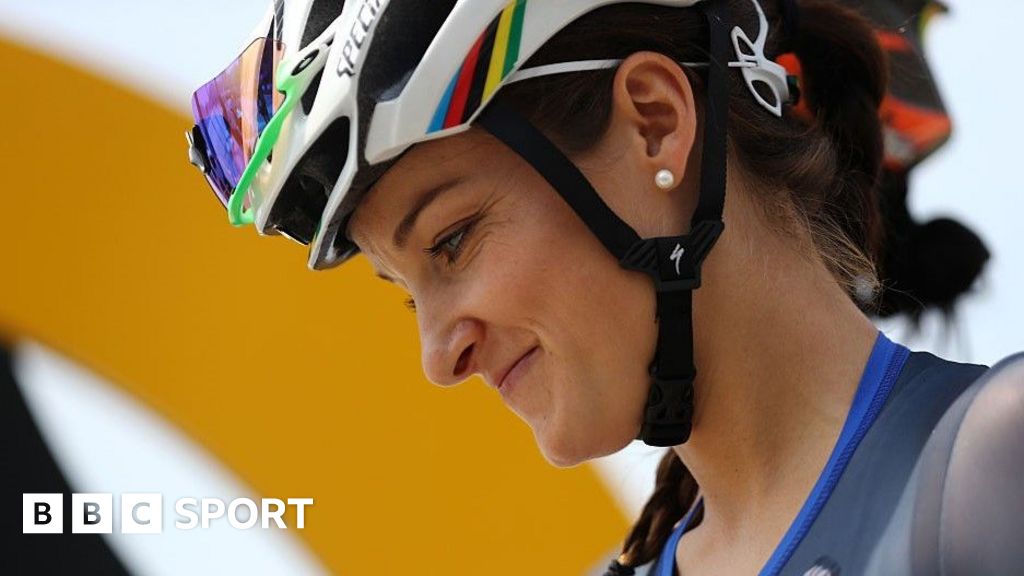Marathon world records have tumbled over the past two weeks in the men’s and women’s races, though the main topic of conversation is not the athletes, but the role played by ‘super-shoes’.
Assefa, a former 800m specialist, only made her marathon debut in March 2022 and was wearing Adidas’ £400 Adizero Adios Pro Evo 1 shoes.
There was more to come – Kenyan long-distance runner Kelvin Kiptum crossed the line in a world record time at the Chicago Marathon on Sunday, wearing what World Athletics call Nike Dev 163 trainers. Nike has confirmed they are Alphafly 3 shoes.
Kiptum completed the race in 2:00:35, beating the record set by compatriot Eliud Kipchoge in 2022 by 34 seconds.
It was an incredible achievement for someone competing in just their third marathon, and he now boasts three of the six fastest times in history.
He recorded a personal best of 2:01:53 on his debut in Valencia in December 2022 – the sixth-fastest time in history – and improved on that by 28 seconds when he won this year’s London Marathon in the third-fastest time ever.
The women’s Chicago Marathon was won by Sifan Hassan, who set a course record, also wearing Alphafly 3s.
So, what are these ‘super-shoes’ and how much of an advantage, if any, are athletes like Kiptum and Assefa gaining by wearing them?
What are ‘super-shoes’?
Governing bodies have been trying to keep pace with advances in footwear technology over recent years and World Athletics updated their regulations in January 2022.
It released an 18-page document which stated shoes could not be used unless they were available to “any athletes participating in applicable competitions”, while it also had technical requirements for the thickness of the sole.
World Athletics has said the Alphafly 3s are on their “approved shoe list – meaning it is compliant with our technical requirements”.
Nike’s Alphafly 3 shoes, which are the upgrade on their Air Zoom Alphafly NEXT%2 trainers, have been ratified for developmental use by World Athletics until 3 December – Nike say they “will be released for consumers in 2024”.
The weight of the Alphafly 3s is yet to be confirmed by Nike, but they feature stiff plates or rods embedded in the midsole, usually made of carbon, to help the shoe hold its shape and it has a curved midsole geometry designed to propel runners forward.
The Adizero Pro Evo 1s, meanwhile, weigh in at just 138g and are “40% lighter than any other racing super-shoe Adidas has ever created”.
Adidas say they feature “a revamped geometry with a first-of-its-kind forefoot rocker, placed at 60% of the length of the shoe, to trigger forward momentum and improve running economy”.
Kipchoge changed the game

Kipchoge is a name synonymous with long-distance running.
He won marathon Olympic gold in 2016 and repeated the feat in 2020, while he set a world record in 2018 – one minute 18 seconds quicker than the previous best set four years earlier.
Kipchoge made history in 2019 when he became the first person to complete a marathon in under two hours – finishing the Ineos 1:59 Challenge in 1:59:40, in Vienna, Austria.
That time, however, was not recognised as the official marathon world record because it was not in open competition, Kipchoge used a team of 41 pacemakers and had a bike delivering hydration throughout.
Now aged 38, Kipchoge’s record-breaking days might be behind him but he was the trailblazer, especially when it comes to the introduction of high-tech trainers.
Kipchoge was wearing the first version of Nike’s Alphafly prototype shoes when he clocked under two hours in Austria, and World Athletics subsequently banned athletes from wearing them in January 2020, claiming they were “distorting the record books”.
He also wore Alphafly 3s when he won the Berlin Marathon for the fifth time two weeks ago.
Who is running the race – brands or athletes?
As the past fortnight has demonstrated, marathons are becoming as much about brands as they are the runners.
Two of the biggest hitters in sportswear, Adidas and Nike, are battling to be involved with the first athlete to break the magic two-hour mark in a marathon.
Dr Thomas Allen, senior lecturer in sports engineering at Manchester Metropolitan University Institute of Sport, told BBC Sport: “It’s important to not take it away from the athletes.
“They are improving with training techniques, nutrition and support from sponsors. All of this contributes.
“The shoes are helping but it’s just a small improvement. Athletes have to be very good but there is evidence to say the shoes are helping. Many athletes are wearing these advanced shoes.”
Adidas boasted about their athlete Assefa making history in Germany, and Nike were quick to post on social media after Kiptum’s success on Sunday.
The women’s Chicago Marathon was won by Hassan, who set a course record wearing Alphafly 3s.
Former Great Britain long-distance runner Richard Nerurkar told BBC Sport: “The shoe technology that has come in in the last five years has made a huge difference in terms of how fast people are running. So we can’t deny that.
“But marathon running is a very, very tough sport, so to run fast or to run very fast or to break world records you’ve got to train incredibly hard.
“Kiptum who broke the world record in Chicago and Assefa who broke the world record two weeks ago in Berlin, they have to be applauded for their hard work in training. Some people would say it’s the shoes and the shoes alone, but I would say it’s a combination of a lot of hard work and obviously shoe technology.”
Where do we go from here?
The pursuit of becoming the first person to complete an officially ratified marathon in under two hours will continue to gain pace, especially with the 2024 Paris Olympics on the horizon.
“We’re at a point where it might come soon,” Dr Allen said.
“As soon as it gets this close, everyone is talking about it and everyone wants to be that person to do it, so it puts that extra little push behind everyone.”
Kipchoge was 34 when he first broke the marathon world record, winning the 2018 race in Berlin, which suggests 23-year-old Kiptum has time on his side.
World Athletics told the BBC: “It is also important to note that beyond shoe technology, world records are simply evolving with the times.
“Throughout the history of our sport, world records were always set with the best technology available at the time, it is no different today.
“In addition to shoes, there are many factors which contribute to the constant improvement of athletic performances in our sport, including enhanced coaching techniques, more competitions and opportunities for our athletes to challenge their limits, refined courses which optimise running conditions, multiple pace makers and food integrators.”






